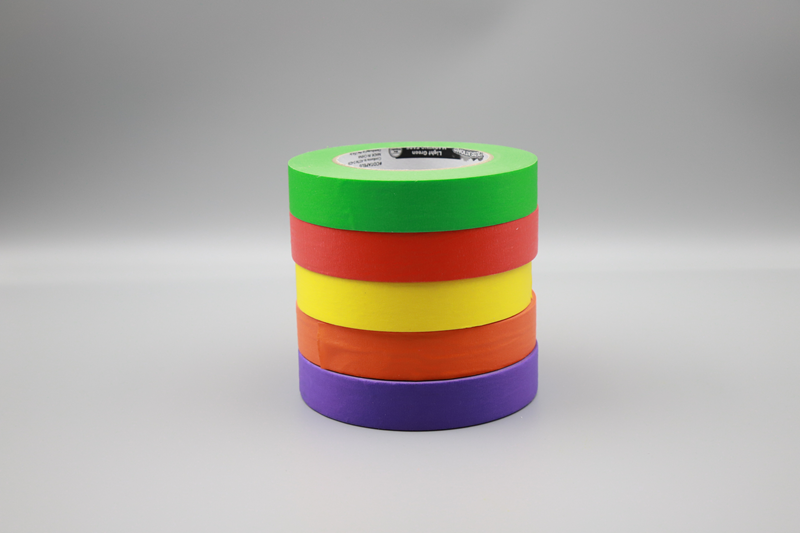What is Masking Tape Used For?
Masking tape is primarily used for a variety of applications that require temporary adhesion. Its primary purpose is to mask off areas during painting, allowing for clean lines and preventing paint from bleeding into unwanted areas. However, its uses extend far beyond just painting. Here are some common applications:
Painting Projects: As mentioned, masking tape is widely used in painting to create sharp edges. It is ideal for both interior and exterior projects, ensuring that paint stays where it is intended.
Crafting: Artists and crafters often use masking tape to hold materials in place while they work. It can be easily torn by hand, making it convenient for quick fixes and adjustments.
Labeling: Masking tape can be written on, making it an excellent choice for labeling boxes, files, or any items that need identification. This is particularly useful in offices or during moving.
Sealing: While not its primary function, masking tape can be used to seal boxes or packages temporarily. It provides a quick solution for securing items without the need for more permanent adhesives.
Automotive Applications: In the automotive industry, masking tape is used to protect surfaces during painting and detailing. It helps to ensure that only the intended areas are painted, preventing costly mistakes.
Home Improvement: DIY enthusiasts often rely on masking tape for various home improvement projects, from hanging wallpaper to creating decorative designs.

What is the Difference Between Masking Tape and Painter’s Tape?
While masking tape and painter’s tape may seem similar, they are designed for different purposes and have distinct characteristics. Understanding these differences can help you choose the right tape for your project.
Adhesive Strength: Painter’s tape typically has a gentler adhesive compared to masking tape. This is designed to prevent damage to surfaces when removed, making it ideal for delicate surfaces like freshly painted walls or wallpaper. Masking tape, on the other hand, has a stronger adhesive, which can be beneficial for projects that require a more secure hold.
Surface Compatibility: Painter’s tape is specifically formulated to adhere well to painted surfaces without causing damage. It is designed to be removed cleanly, leaving no residue behind. Masking tape, while versatile, may not perform as well on certain surfaces, especially if they are delicate or freshly painted.
Thickness and Texture: Painter’s tape is often thinner and has a smoother texture, which helps it conform to surfaces better, ensuring a tight seal. Masking tape is generally thicker and may not provide the same level of precision when it comes to creating clean lines.
Color and Visibility: Painter’s tape is often available in various colors, making it easier to see against different backgrounds. Masking tape is usually beige or tan, which may not be as visible in certain applications.
Price: Generally, painter’s tape is more expensive than masking tape due to its specialized formulation and features. If you are working on a project that requires precision and care, investing in painter’s tape may be worthwhile.

Does Masking Tape Leave Residue?
One of the most common concerns when using masking tape is whether it leaves behind any residue after removal. The answer largely depends on the quality of the tape and the surface it is applied to.
Quality of the Tape: High-quality masking tape, such as those produced by reputable masking tape manufacturers, is designed to minimize residue. These tapes often use advanced adhesive technology that allows for clean removal without leaving sticky remnants.
Surface Type: The type of surface you apply masking tape to can also affect residue. On porous surfaces like wood or drywall, there is a higher chance of residue being left behind. Conversely, on smooth, non-porous surfaces like glass or metal, masking tape is less likely to leave residue.
Duration of Application: The longer masking tape is left on a surface, the more likely it is to leave residue. If you plan to leave the tape on for an extended period, consider using painter’s tape instead, as it is designed for longer-term applications without residue concerns.
Environmental Factors: Temperature and humidity can also play a role in how well masking tape adheres and how easily it can be removed. In high humidity or extreme temperatures, the adhesive may become more aggressive, increasing the likelihood of residue.
Post time: Oct-18-2024




